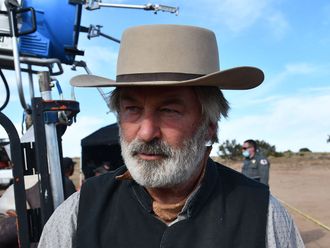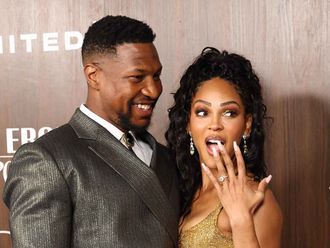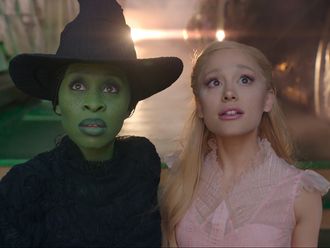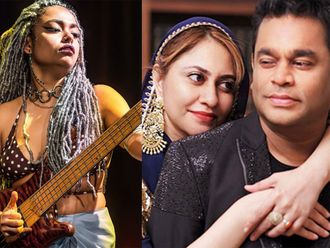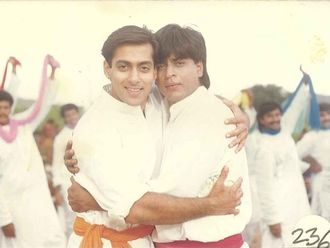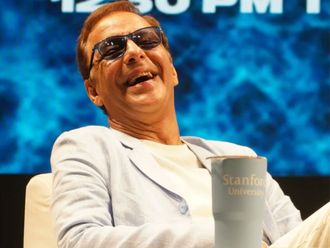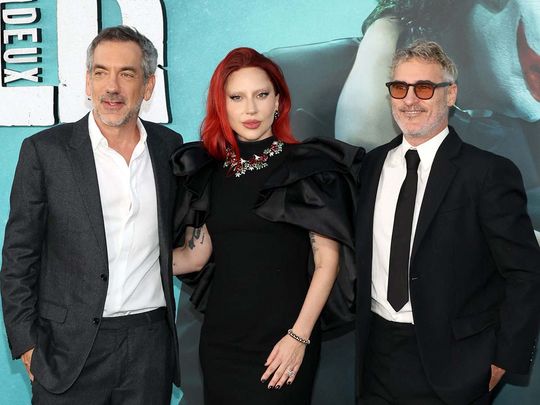
Oscar-nominated director Todd Phillips knew he was stepping into uncharted territory with 'Joker: Folie à Deux', daringly blending musical elements with a dark psychological thriller.
"It’s always nerve-wracking when you’re putting out any new movie, especially when you're really sort of swinging for the fences and doing something very different from the first movie," Phillips shared during an exclusive roundtable in London.
In 'Joker: Folie à Deux', he explores themes of duality and corruption, collaborating with talents like Joaquin Phoenix and Lady Gaga. (Review here)
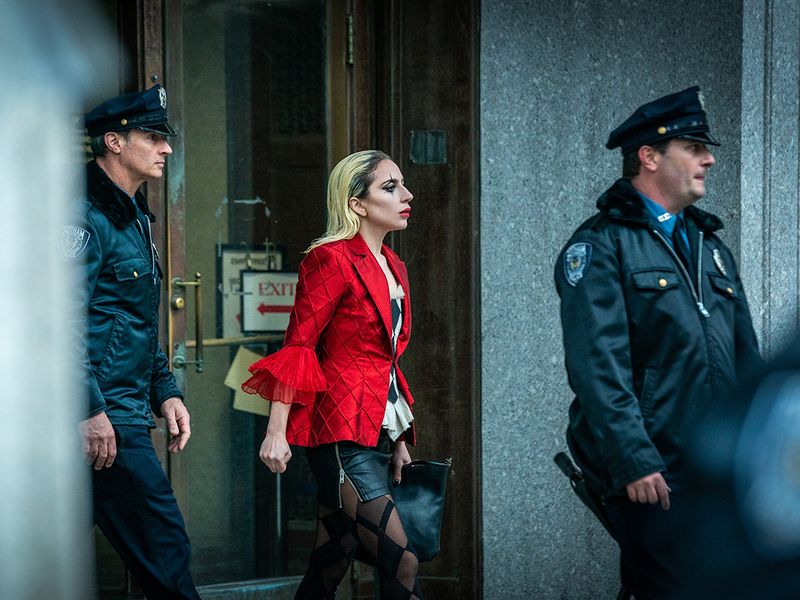
Set two years after the first film, in which Arthur Fleck, in full clown makeup, shot a talk show host (Robert De Niro) live on television, the sequel chronicles his circus-like trial, streamed live on TV, and dives deep into his volatile, disturbed mind.
Arthur, now facing a potential death penalty, becomes the center of a salacious reality-TV spectacle. But the silver lining? The emaciated and emotionally shaken Arthur has found dizzying love in his mental asylum. It’s the dynamic between the power-hungry Lee, played by an on-point Lady Gaga, and the broken Arthur Fleck, another spectacular turn by Oscar winner Joaquin Phoenix, that adds heft to the sequel.
"So now, with this new movie, we thought of actually introducing something Arthur has never had before, which is love. Well, then why wouldn't the music that's inside of him come out of him then?," said Phillips. Expect to see Lady Gaga and Arthur Fleck/Joker waltz and pirouette their way into each other's hearts as the anarchaic world around them is engulfed in flames.
Excerpts from the interview with Phillips, as we discuss the film's Venice International Film Festival reception, Phoenix's command over his craft, and why the Joker star is the greatest actor of his generation:
How did you feel when you sat there on the opening night of Joker: Folie à Deux at the Venice International Film Festival?
Oh, you know, it's always nerve-wracking when you’re putting out any new movie. It’s particularly tricky when you're doing a sequel, and then on top of that, it’s tricky when you're really sort of swinging for the fences and doing something very different from the first movie. So I was nervous. I always am.
How did you feel when the applause started?
Well, you know, I felt great, but I will honestly say that film festival audiences are very different from regular audiences. They come, they appreciate the art of cinema. While I was happy and grateful, a part of me knew that such a movie is literally made for this festival crowd. But let's get it out into the wild—into the real world—and see what people think.
I was reminded of a Bollywood movie when I watched Joker: Folie à Deux. How difficult was it to incorporate musical elements into such a film?
To hear that it reminds you of a Bollywood movie, to me and to all filmmakers, would be a great thing to hear... I take it as a compliment. But, you know, for us, it didn’t seem like as big of a departure as it does to seemingly everybody else who keeps asking me about it. When we made the first movie, one of the first things Joaquin and I talked about was Arthur. Yes, he's left-footed, and yes, he's out of step with the world, but he has this romance in him. There's a music inside of him. And I think that Joaquin took that and ran with it in the first movie. If you remember, he's dancing in the bathroom or he's dancing down the stairs in the Bronx. So now, with this new movie, we thought of actually introducing something he's never had before, which is love. Well, then why wouldn't the music that's inside of him come out of him? So it wasn't really as crazy as it seems. But the problem is, I'm not there to explain that to everybody before they watch and go, "Why?"
The film has a rich tapestry of visual and thematic cues. What were the strongest cultural influences for the story?
You could say the look and the vibe were influenced by a few documentaries about musicals that I watched. I remember watching with my DP [Director of Photography] That's Entertainment, which is a documentary about all those musicals that we all know from the '40s and '50s. We were inspired culturally by, of course, that whole group of movies.
There are two stories really going on. This idea of the duality of Arthur and Joker. Folie à Deux revolves around the idea of the duality of a person and that two sides exist in a person: the side we show people and the side we don’t. There’s also a story of corruption in it—not just the corruption of the prison system or the judicial system. It also touches upon the corruption in entertainment. If a court trial is sold on TV, at least in the United States, with commercials—where do we stand? Our presidential debate is sold like a boxing match, right? If everything is entertainment, what’s entertainment? There’s a little of that culturally woven into it.
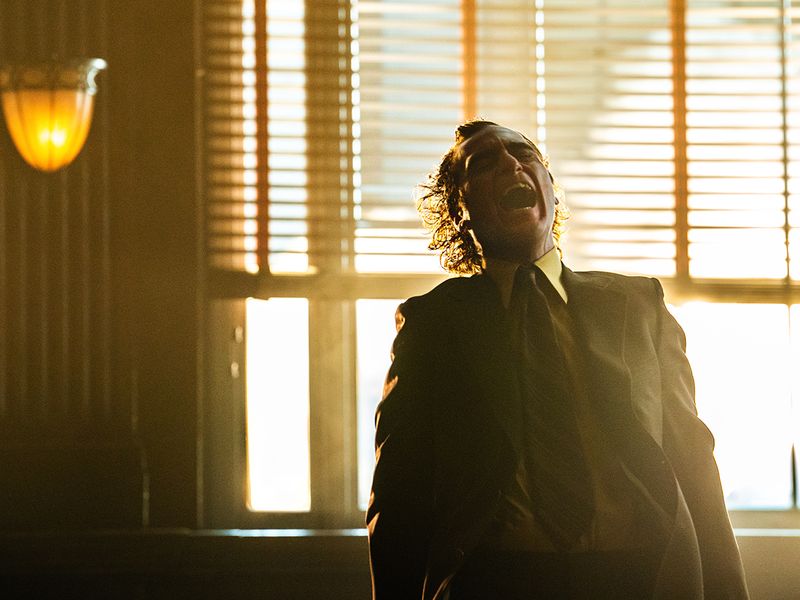
That's interesting because, in the end, 'Joker' is also entertainment, right?
Yes and no. It’s tricky. What I meant by that is it’s kind of depressing as a filmmaker if this is where entertainment is headed—talking about court cases and presidential debates and things like that. If all that's being sold as entertainment, what is it that we do as filmmakers and storytellers?
Did you ever question why your characters do certain things? Did you think about sanitising it for the second film?
We never think about that. We never felt like we sanitised it. We go by that feeling of where this story is going to take us. There were no restrictions put on us by a studio or by the response to the first movie. I mean, there are certain things in this movie that you could read into as a response to the response of the first movie.
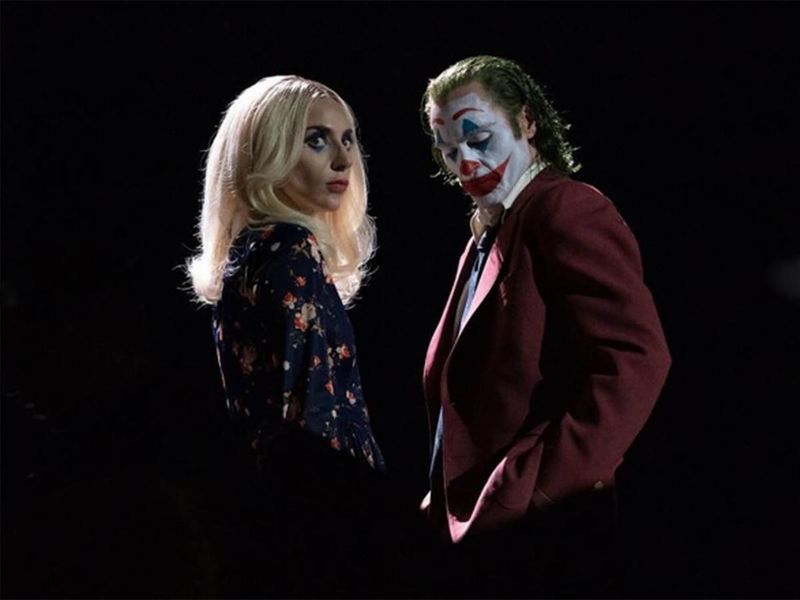
Did you hesitate to pair Joaquin Phoenix, who’s not a singer, with Lady Gaga, who is a very good singer?
No, the kind of singing that’s done in the movie is not about technique; it’s about emotion. I don’t think anybody can do emotion better than Joaquin Phoenix. To me, I'm not saying he's a better singer than her, but the emotion with which he sings brings him up to the level of anybody.
This movie feels like it’s being told from Arthur’s point of view but later shifts to another lens. How much do you enjoy seeing the audience's reaction?
Yes, it’s all part of making movies and telling stories. It’s not like I employ any trick or sleight of hand. To me, I wonder if the whole thing works for people? I'm of the firm thought that not every movie has to be for everybody, and that’s okay. When you try to start making movies for everybody, oftentimes you don’t hit anybody. But when you do what feels right to you as an artist or as a filmmaker, people tend to discover and love it too. That’s all you can do.
Considering the great success of the first film, did you and Joaquin ever feel you should not make a sequel?
No, because we love the character Arthur so much. So often, when you make a movie, my experience when we get to the last two weeks is like counting days of a prison calendar. You just want it to be over because it’s hard. But on Joker, we did not want it to end. It wasn’t just because Joaquin and I love working together; it was because we loved Arthur. We just didn’t want to leave Arthur. I don’t know what it is about him. We love that character. So it was never a question when the movie became successful: let’s revisit Arthur.
What do you think of the various interpretations of the 'Joker'?
There are so many different versions of the Joker in films and in comics. He’s a bit of a blank canvas where you project your own ideas onto him.
But why are you attracted to the Joker?
To be honest with you, it sounds so bad, but when I watch movies, I watch the actors. Even as a director, I know what a beautiful image is, and I know what sound is, but I just find myself watching actors. The inspiration for the first movie was that I wanted to work on a movie where I could dive deep with a single actor. If I could work with a single actor, I wanted it to be Joaquin Phoenix because I think he’s the greatest actor of my generation. A lot of it came from me creating something to attract Joaquin Phoenix, as crazy as that sounds. It was less about comic books, quite frankly, and more about getting a studio on board with doing a character study that I could get Joaquin Phoenix in.
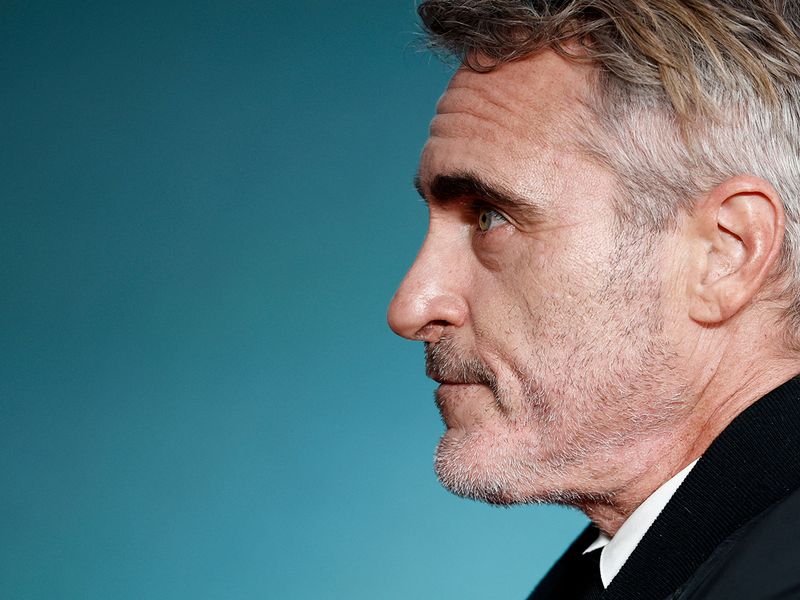
Does that mean that Joker is the new Macbeth?
No, no, but I’ve said it before: it’s the Holy Grail. Jack Nicholson, Jared Leto, Joaquin—I agree. It’s, in general, maybe this is a horrible statement of our times, but in some ways, comic books in general are the new Shakespeare. I don’t mean they’re better than Shakespeare.
Don't Miss It!
Joker: Folie à Deux is out in UAE cinemas now


